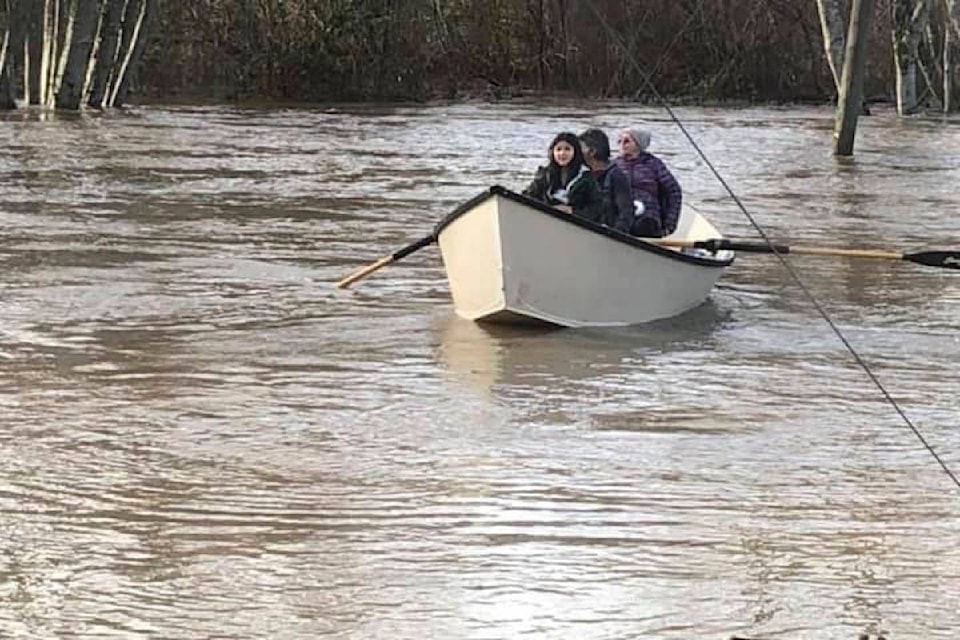It’s hard to believe that it even happened this year, but there was massive flooding in the Cowichan Valley at the start of 2020 — big enough to be an early candidate for Story of the Year.
And it was indeed a major story, albeit quickly overshadowed in the months following and nearly constantly ever since, by the COVID-19 pandemic.
It had been raining, as usual for the time of year, but something was different on Jan. 31. The rain was relentless. By that Friday evening the Chemainus River was above a five-year flow and still rising, causing the evacuation of members of the Halalt First Nation. The mighty Cowichan River was also on the rise.
A Category 4 atmospheric river had passed over the Island overnight Friday and into Saturday, Feb. 1, bringing torrential rains that flooded the region, causing numerous evacuations and a state of emergency to be declared by the Cowichan Valley Regional District and Cowichan Tribes. Roads were closed as the swell of rivers and lakes in the district also flooded people’s homes and yards and closed parks.
SEE RELATED: State of emergency declared for Cowichan Valley after heavy rain, flooding
A number of main roads, including the Trans-Canada Highway between Nanaimo and Duncan, as well as the Pacific Marine Circle Route from Cowichan Lake to Sooke were closed for a time — effectively cutting Cowichan off from the north and west. Numerous smaller but well-utilized local roads like Canada Avenue and Cowichan Bay Road were also closed affecting the way citizens could move about the Valley.
The water levels in the Koksilah, Chemainus, and Cowichan Rivers peaked overnight from Friday and into the early morning hours of Saturday.
The flood waters had receded in most of the hardest hit areas but the state of local emergency for the Cowichan region was still in place as of mid-day Tuesday, Feb. 4.
Clean-up had begun in all corners of the region.
SEE RELATED: Cowichan’s state of emergency remains as flood damage reckoning begins
“There’s a lot of debris on the streets,” said Lake Cowichan Mayor Rod Peters, adding it was the worst flooding he’d seen in 15 years.
“It was pretty bad,” Peters he said. “It looks like a tide line in the middle of town.”
In Crofton, a fundraiser was set for the owners of Russell Farm Market as the inside of their store was destroyed by the flood waters.
SEE RELATED: Fundraiser created for popular Vancouver Island farm market overrun with water
Perhaps the hardest hit, however, were the area’s First Nations.
Cowichan Tribes Chief William Seymour called the situation on the reserve “terrible”.
“We’ve still got a lot of work ahead of us…” Seymour said.
The situation drew the attention of the federal government and subsequent visit from federal Indigenous Services Minister, Marc Miller, who vowed to help.
SEE RELATED: Traditional meetings key to solving the Cowichan First Nations’ future flood problems
It took until November to see that help. On Nov. 4 Catherine McKenna, minister of Infrastructure and Communities, made a virtual announcement that the federal government would provide $24.2 million to reduce the impact of climate change on the Cowichan watershed’s ability to deal with increased winter storms and summer drought.
Governments, local and beyond quickly asked for input from residents who experienced the flooding and to date, are still working towards adequate flood mitigation solutions.
Any changes made to help prevent the flooding from happening again have yet to be tested.
sarah.simpson@cowichanvalleycitizen.com
Like us on Facebook and follow us on Twitter
